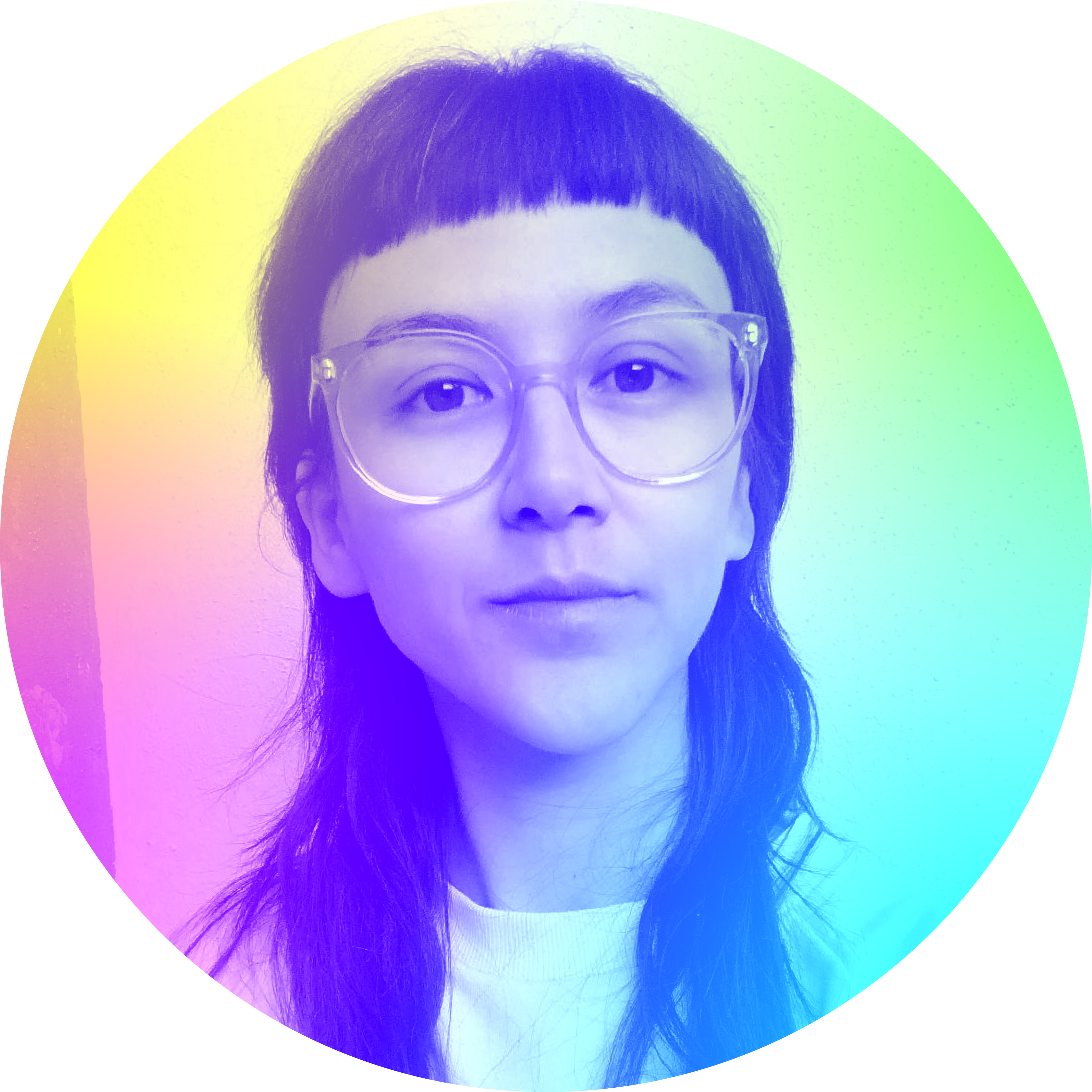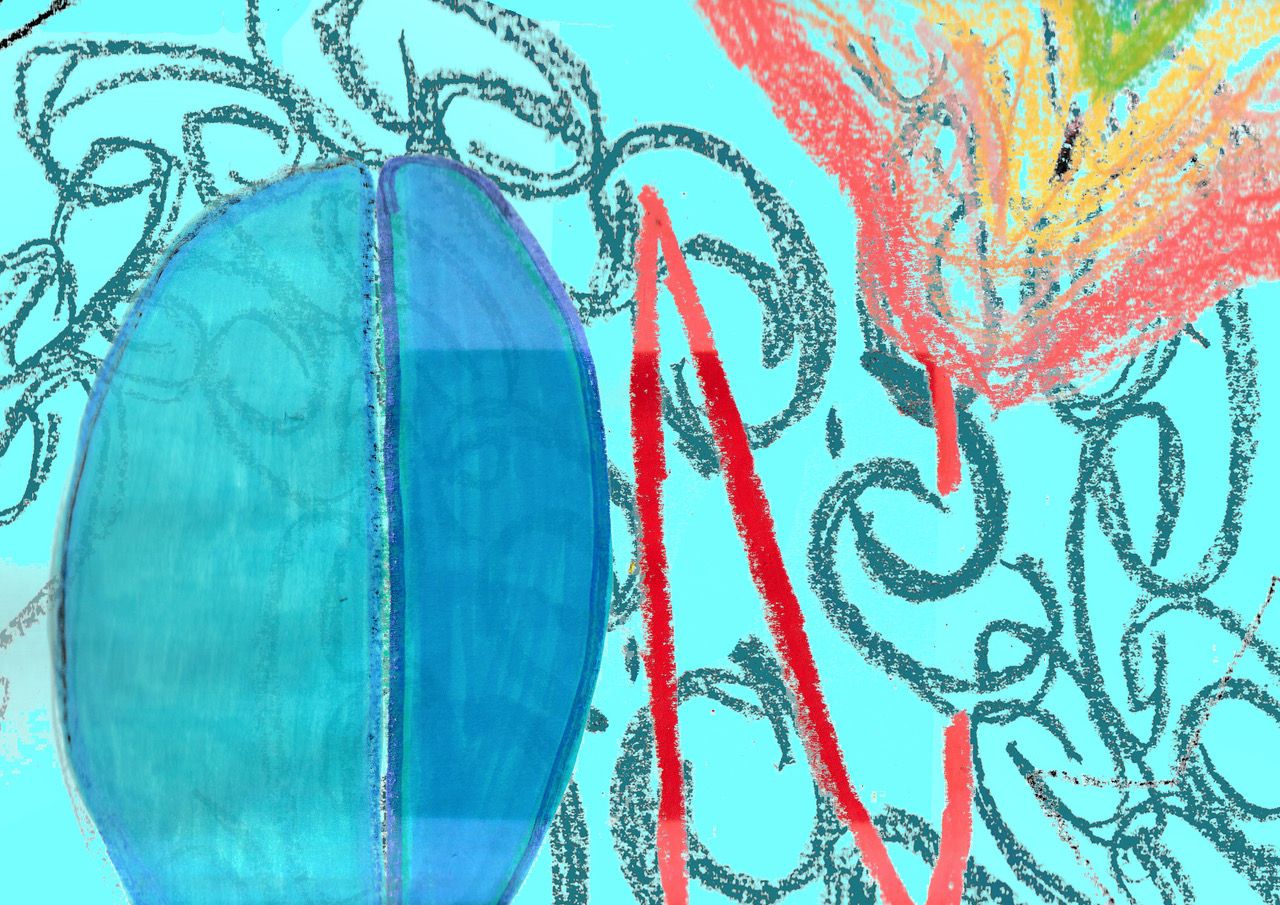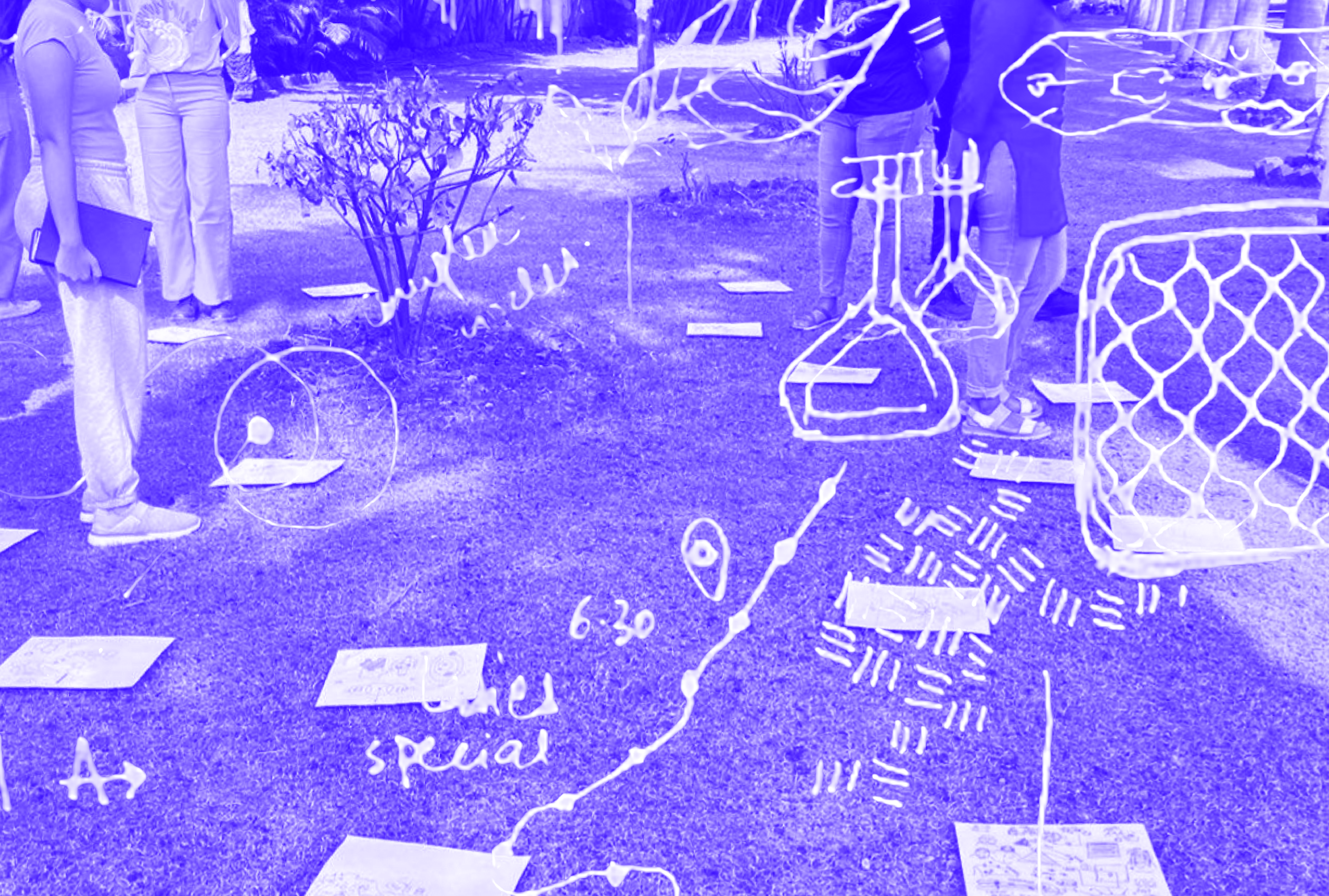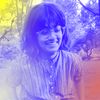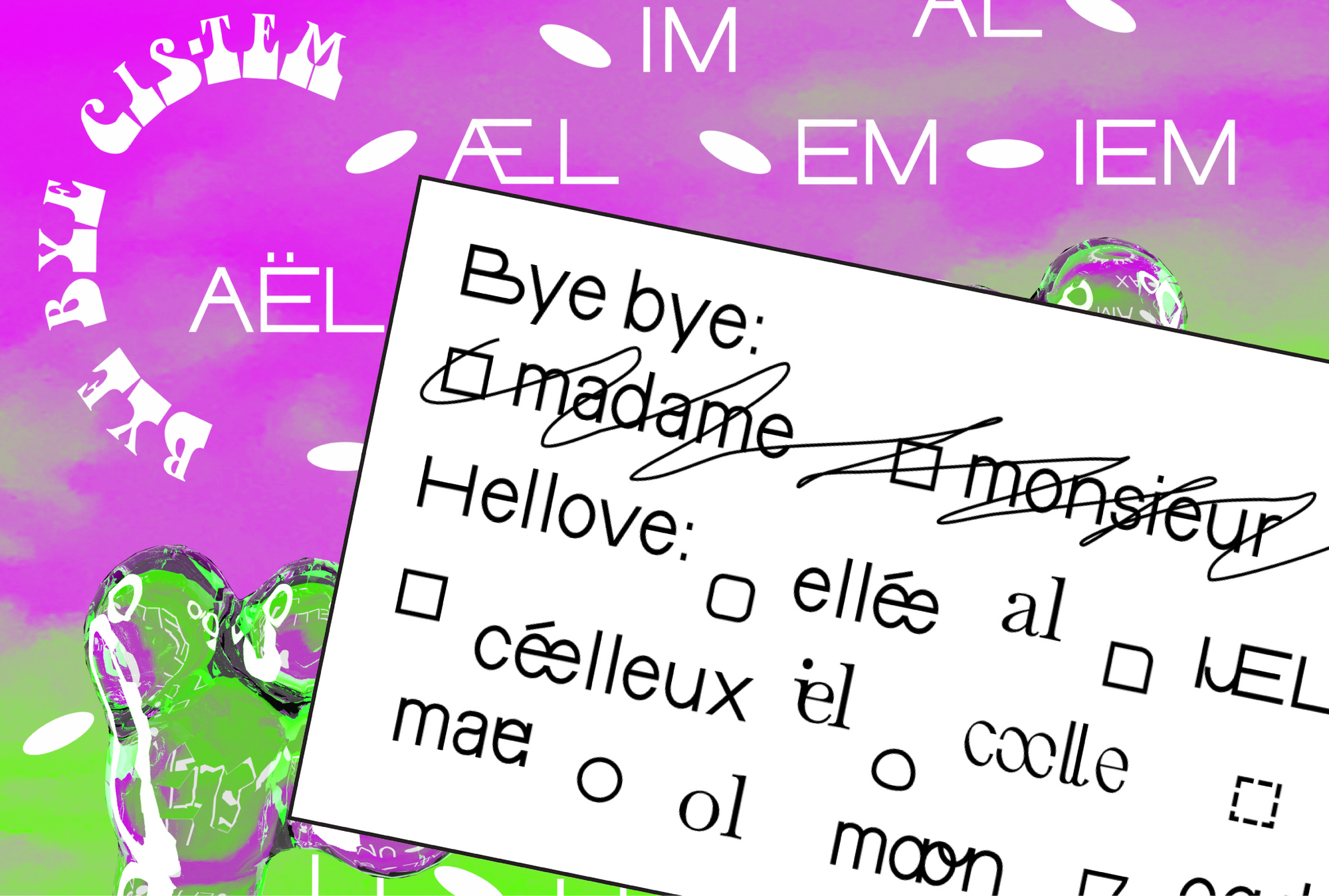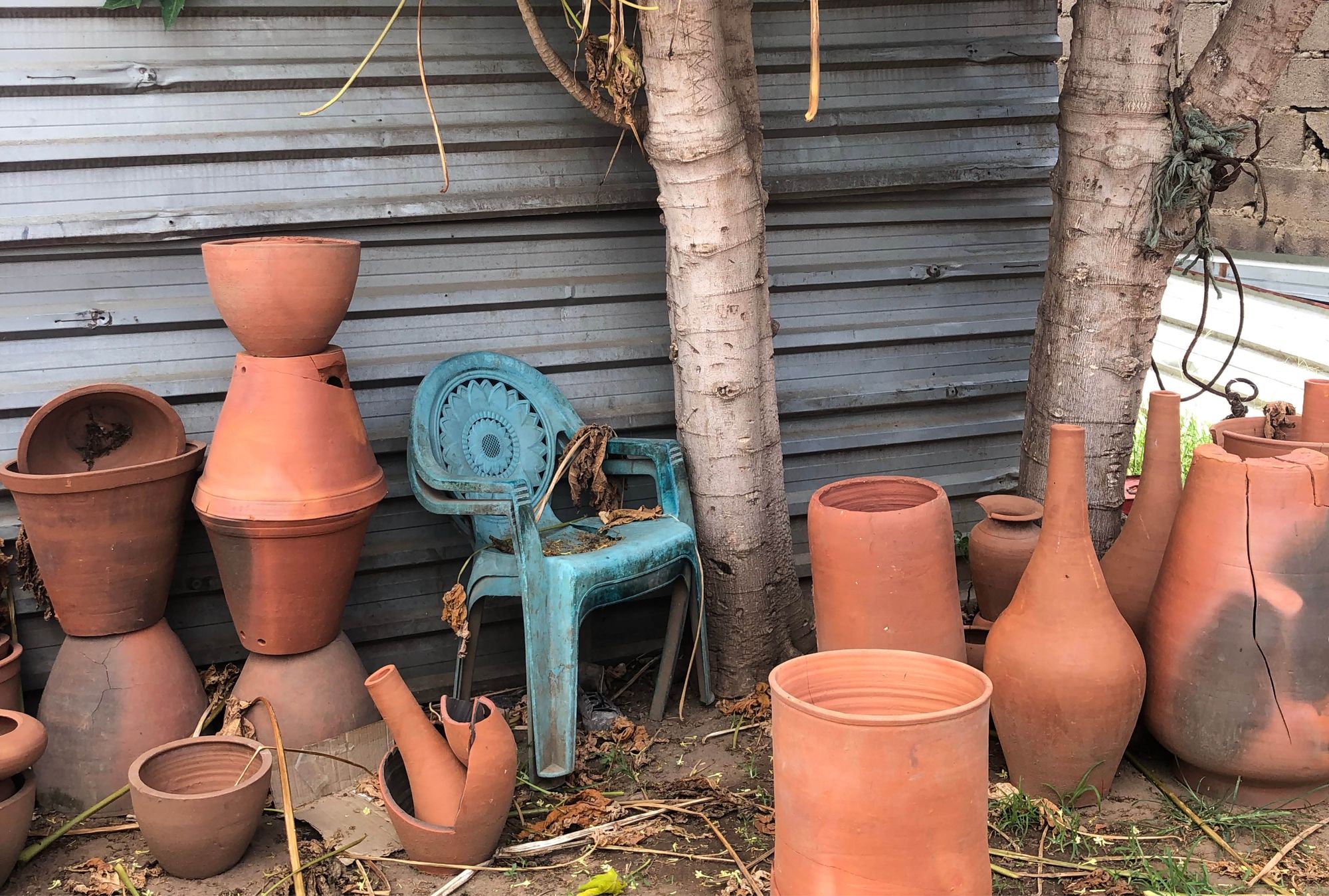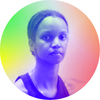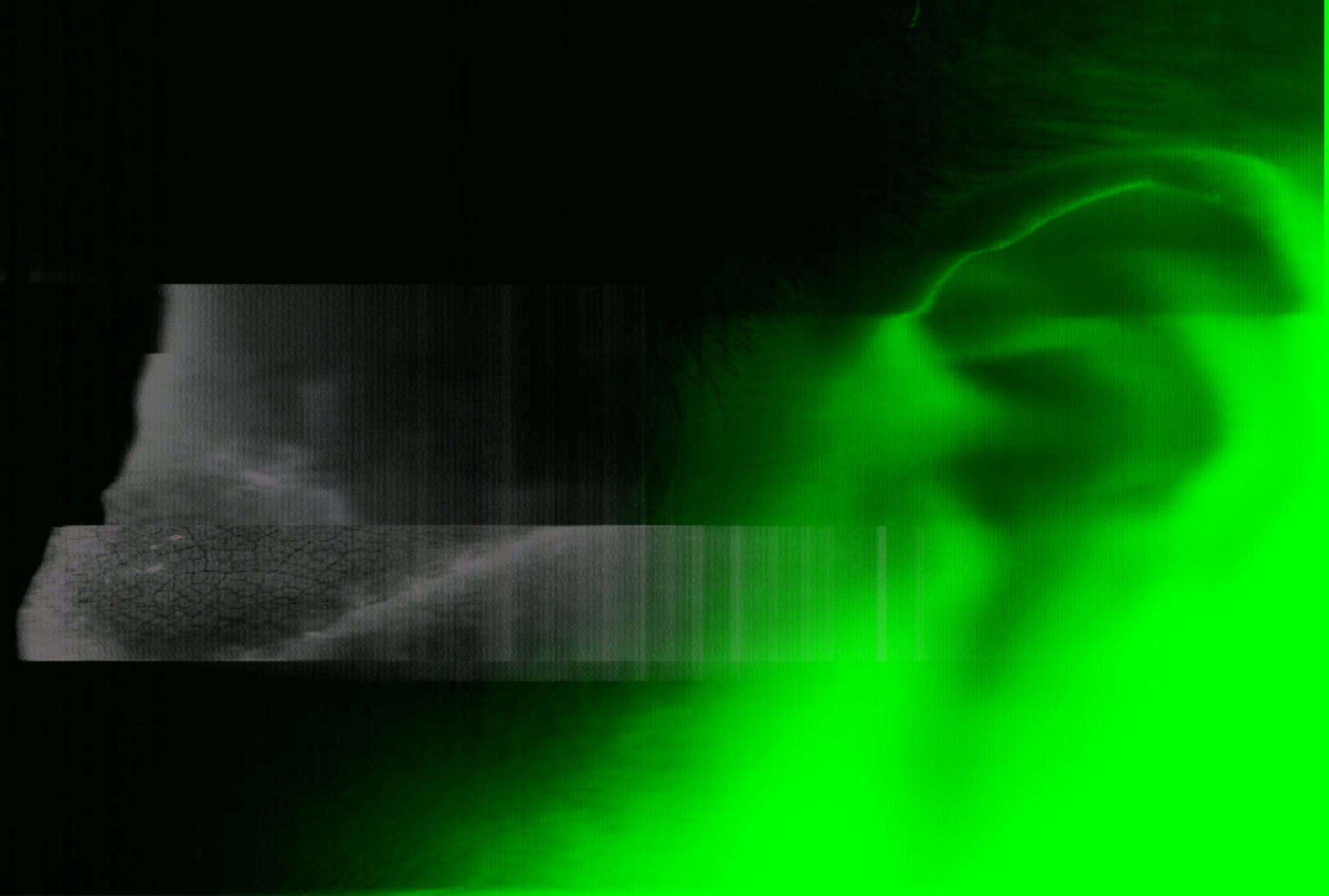
In December 2020, Germany had just entered its second lockdown. Universities had closed, and many were lamenting the loss of physical contact. As a result, numerous online workshops started to emerge. From the isolation of my flat, I joined workshops that were trying to transform an outwardly impersonal digital space into a site of intimacy and togetherness.
Initially planned for specific sites and contexts, these workshops translated into an online format experimenting with the different ways of hearing, listening, and sharing despite the polarized glass of the LCD screen. One of them is “Listen To Me All Around You” by Palestinian-Chilean designer Francisca Khamis Giacoman and Zurich-based artist Tina Omayemi Reden.
The workshop takes place within the departiarchise design !Labs!, a series of educational experiments dealing with the politics of design and trying out new approaches to design pedagogies. On a quiet April Saturday, around 45 participants stretching from Berlin, Germany to Cairo, Egypt, and all the way through Porto Alegre, Brazil and Buffalo, the US dial in to participate in the first fully-virtual iteration of the free workshop. We meet on an etherpad, a collaborative online editor, allowing everyone to introduce themselves simultaneously.
“H-e-l-l-o E-v-e-r-y-b-o-d-y”
letter by letter emerges on the digital whiteboard of our united screens.
“Here, we invite you to listen to this while reading…”
Fran and Tina paste a YouTube link. I click on it, and as the video starts, a loud sound fills my room.
Then, the screen turns white again, and a poem by U.S. author Fred Moten appears:
“Anything that I have to say, that is
because a whole bunch of people,
a whole bunch of history,
a whole bunch of things
sent me to say it.”
As the soundscape continues in the background, the two artists continue their written performance, touching upon memories, time, and community.
In the end, they ask:
“Where are you?”
and
“Are you also there, somewhere?”
There’s a moment of silence on our virtual whiteboard, and finally, one person starts typing:
I…
Then another one, and suddenly a polyphony of sentences pops up, everyone in a new color, and many places unfold.
I am…
I am in…
I type:
Hi, I am Mio, I am in Karlsruhe, Germany. But I am also in Yokohama, Japan, where half of my family lives.
We switch to Zoom to finally see each other’s faces, and together we read a short text by Marxist feminist Silvia Federici. Then, we disconnect and begin individual offline reading from selected texts that have been prepared especially for this occasion, including excerpts from decolonial thinker Rolando Vazquez, Argentine feminist Maria Lugones, and many more. They all tackle topics around memory and oral history. The workshop entails alternating analog and digital sessions with different assignments. To prevent screen fatigue, each online activity only lasts around one hour.
During the lunch break, I eat my spaghetti while listening to the collaboratively created playlist as the sounds start filling my room.
In the final part of the workshop, each of us goes for an outdoor walk playing a game of telephone. I don’t know who would call me, or when. As I walk through Karlsruhe’s crowded streets, my phone vibrates. “Hi,” we exchange a greeting, feeling a bit overwhelmed by this sudden closeness. She tells me a story full of strange details, gaping holes, and confusing twists that must have passed through many bodies of the dozens workshop participants. We laugh and hang up. I call the next person to pass it along—or at least what I remembered. Once back home, we all meet again online for a closing session. Over 40 strangers, not so unfamiliar anymore, click the red button, and one after another disappear from the screen in my living room.
As the Zoom chat switches off, I am alone in my room again, left with a burning curiosity. How would this workshop have felt on site? And more importantly: why did this online version feel so bodily, so lively? To explore these questions more in-depth, I met with the workshop facilitators to discuss the conditions of digital spaces.
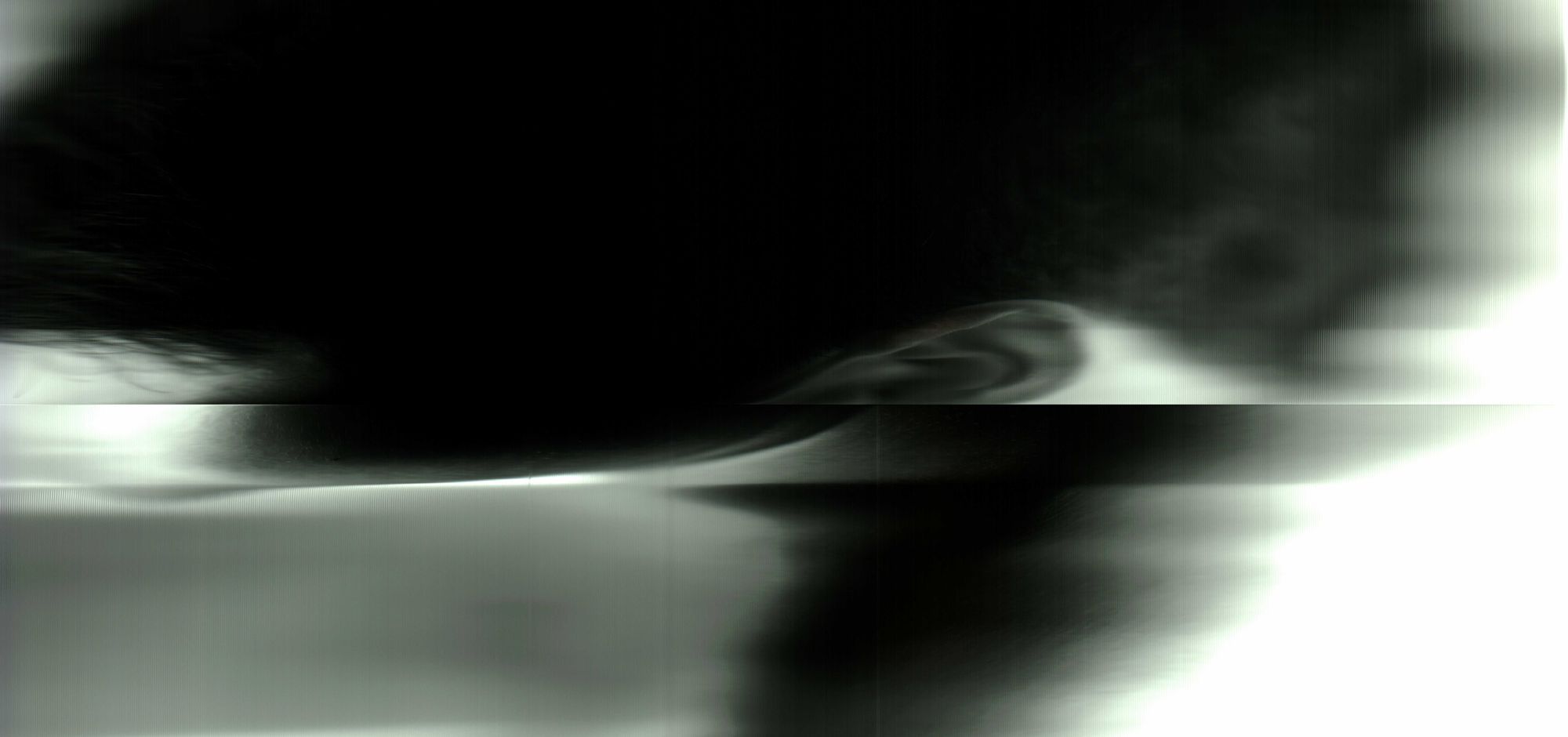
Mio Kojima: In your workshop “Listen To Me All Around You,” you played with online and offline time and brought in so many different formats. Could you tell us about the decision for these various formats?
Francisca Khamis Giacoman: For me, this step of going online with the workshop was a bit overwhelming at the beginning. When depatriarchise design initially invited us to give this lab months before anyone heard of COVID-19, we were supposed to hold it on-site in Basel, Switzerland. So I wasn’t sure if it would work online because it’s challenging to connect bodily if you’re not physically together and don’t know each other. So we asked ourselves: how could we deal with the fact that we don’t share a physical space?
Tina Omayemi Reden: We needed to integrate off-screen moments to return to our bodies. To say, “Okay, I share this online space with the group, but I’m also in this other space, at home.” We always return to what is in the analog space—meaning without electronic digital devices—creating a physical, spatial, and temporal awareness, and then go back into the digital space. This awareness is crucial, especially when it comes to listening. Because very often, we forget that listening is also about listening to yourself and your body.
Francisca: That’s fundamental—the connection with your physical presence. When you’re online, you’re being seen in a specific way, through the lens of your computer’s camera showing only a limited fragment of you, which is not how everyday life is, no? You’re always in this grid of faces in Zoom, and you can see yourself on the screen. That’s something we usually don’t have, and that affects the way you connect with yourself. So it was not only about translating the workshop into a digital setting, but also about understanding the digital as a completely new space.
“Listening also brings me in relation to someone or something. We can talk about it as a very sonic experience—its vibrations, the sound waves as they resonate and bounce back to me. So it’s all relational.”—Tina Omayemi Reden
Mio: Listening is a very bodily activity—how did this change in the digital setting?
Tina: Listening has so many components. We can engage in listening when we hear a sound or a voice—but we can also listen with our hearts, we can listen with our bodies, and we can listen with our eyes. According to the U.S. feminist composer Pauline Oliveros, listening is hearing plus composing your attention. So, hearing happens, but listening means bringing awareness to certain things and—if you think about it—towards the whole body as well. Listening to someone is about directing your attention to another person’s body. It’s tough to listen to someone while I am moving alone in my space, because so much information within this bodily listening is not there.
Listening also brings me in relation to someone or something. We can talk about it as a very sonic experience—its vibrations, the sound waves as they resonate and bounce back to me. So it’s all relational. And the same with bodies—the way I move or take up space affects other people. These things are lost in digital spaces. I often feel that my bodily experience is a little gone because I am in a space with other people, because I don’t get vibrations.
Francisca: Even though we’ve had digital spaces for a long time, this experience of connecting exclusively through digital spaces is new. We tried to shift some of the digital space to other forms of listening, for example, that part of the workshop when we communicated through phone calls. In that case, you don’t have any visual information at all. Because you don’t see the other person, you don’t try to connect to an image—you just listen to their voice. So, we can’t talk about digital as one single space. You could also turn off your cameras or unmute yourselves, which would be a totally different environment. I find it interesting how these different settings allow you to shift the focus and change how we engage with one another.

Mio: What you said is crucial, Francisca—we can’t speak about the digital space as singular. And I think the way you designed your workshop created awareness for this.
Francisca: With the pandemic and the lockdown, the screen became this space for everything. You open the computer and then you’re working, but you’re also communicating with the people you love, and you’re also reading things. You’re also watching TV, and you’re also attending exhibitions and concerts.
Tina: Skype was launched in 2003. For almost 20 years, video conferencing software has been something very personal. It was a place where I would connect with family or friends abroad. Every moment I used it was pretty intimate and related to a positive feeling. But then, with the COVID-19 pandemic, video telephony became the most productive tool ever. I sometimes have meetings from 9 to 10, 10 to 11, 11 to 12, and 12 to 1. Before all this took place digitally, this wouldn’t have been possible physically, spatially, or time-wise. The bodily, spatial, and temporal perception completely changed, creating an unhealthy working environment. I think the digital can still be a space where we exchange intimacies and where we can also connect physically. However, for me, it turned from being quite intimate and private to being very corporate, work-related, and productivity-oriented.
“The fact that everything, including professional and private life, takes place onscreen is disruptive and makes it difficult to see it as an intimate space.”—Francisca Khamis Giacoman
Francisca: The fact that everything, including professional and private life, takes place onscreen is disruptive and makes it difficult to see it as an intimate space. I wouldn’t necessarily go to the office to have a personal conversation because I attribute this space to different relations. Why would I want to have one on the same platform I just used to talk to my boss, tick off my to-do list, and finalize my assignments? On the one hand, I feel we need some separation or change to engage with different emotions. On the other hand, we also have to develop our senses. I grew up in the pre-digital era and lived in the pre-Covid world, and it is tricky for me to perceive my laptop as both an intimate and working space. The transformation from one space to another within the same device feels like too much. But maybe for the younger generations, it will be completely organic.
Tina: In the way that we navigate in these digital spaces, for the moment, we can’t be attentive for multiple hours a day without a break. So I am coming back to the consciousness marking the difference between hearing and listening or seeing and looking. The mindfulness required to listen properly is not given in many moments when we engage digitally. For this reason, in our workshop, we decided that we couldn’t be on a video call together throughout the whole workshop and expected everyone to listen attentively all the time. It’s too much. We need breaks. At the same time, having awareness in both the digital and the analog requires a lot of energy. So we need time to go back to the physical space—being aware of you, your body, the other person, and the shared digital space; it’s always about being aware in both realms.
Mio Kojima (she/her) is a German-Japanese designer, researcher, and educator interested in playful and collaborative approaches to creating and sharing knowledge. Her practice is often shaped by the idea of creating frameworks that can be filled, expanded, and reformed by others and that create space for community and exchange. Since 2021, Mio has been the Managing Editor at Futuress and a Mentor at the Make Your School Hackdays.
Tina Omayemi Reden (she/her) is an interdisciplinary artist living in Zurich, Switzerland. In her practice, she explores the role of active listening—both as a metaphor and as a concrete, sound-specific practice. She explores sound improvisations, rituals, storytelling, or listening sessions as possible places for decolonial, queer feminist, and mindful practices —always trying to integrate discursive situations and initiate moments of being together. Her work carries unheard stories into the exhibition space and follows an approach that wants to know society as an interwoven multiplicity with diverse voices, appropriating or creating spaces for it.
Francisca Khamis Giacoman (she/her) is an artist and designer based in Amsterdam in the Netherlands. By diving into her own family archive, she questions the possibilities present within the representation and reproduction of memories. Focusing on the notion of diaspora(s), she explores the mobility between reality and fantasy of the immigrants’ memory and how this leads to new interpretations of personal identity. Through performances, video essays, and workshops; and through writing on remembrance, oral tradition, and fiction, Khamis Giacoman looks for alternative ways of knowing, using the task of listening as a strategy to break open the modern control over a singular narrative and chronology.
Images by Desiree Kabis from the project “Electric Animal.”
Desiree Kabis (she/her) works at the intersection of media art and graphic design, combining generative image production, narrative, and material quality in her approach. Her works, which have been shown and published in Germany and Japan, explore themes of perception, awareness, and sensuality. She is the co-founder of the Messy Archive Group.
“Listen To Me All Around You” was last of nine depatriarchise design *!Labs!* that took place between 2019–2021.
This text in a slightly different form was part of Mio Kojima’s graduation project titled “Hybrid Encounters/In Close Distance: A search for intimate and bodily experiences in digital communication” at the Karlsruhe University of Art and Design, Germany.

